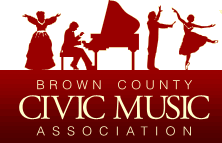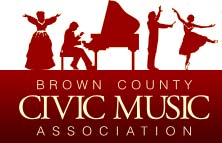GREEN BAY
Saturday, May 5, 2018 at 7:30pm
Leonard Bernstein
Born 25 August 1918, Lawrence, Massachusetts
Died 14 October 1990, New York, New York
Candide Overture
Composed: 1955-56
First performance: 1 December 1956; New York (Broadway opening)
26 January 1957 (concert version)
Last MSO performance: May 2016; Asher Fisch, conductor
Instrumentation: 2 flutes, piccolo, 2 oboes, 2 clarinets, E-flat clarinet, bass clarinet, 2 bassoons, contrabassoon, 4 horns, 2 trumpets, 3 trombones, tuba, timpani, percussion (bass drum, cymbals, glockenspiel, snare drum, tenor drum, triangle, xylophone), harp, strings
Approximate duration: 5 minutes
Leonard Bernstein’s best-loved concert piece began its life in the theatre. Following a three-week trial run in Boston, his operetta Candide opened at Broadway’s Martin Beck Theatre on 1 December 1956, with Samuel Krachmalnick as music director. The composer led the New York Philharmonic in a concert-hall performance of its sparking overture less than two months later. Within a couple of years, nearly a hundred orchestras had performed the work.
Candide ran for 73 performances, a staggering number in the opera world, but disappointing by Broadway standards. Lillian Hellman’s adaptation of Voltaire’s novella received much of the blame for the show’s failure, but adapting its many locations and quick-paced adventures to the stage was no easy task. Across the following decades, Bernstein’s “valentine to European music” continued to be tweaked, growing ever more convincing; a 1989 Deutsche Grammophone recording under his direction was one of the maestro’s final projects.
The overture features some of the show’s great tunes, including a duet for Candide and Cunegonde, “Oh, Happy We,” and Cunegonde’s coloratura aria “Glitter and Be Gay.” At times wistfully lyrical, at others whimsically effervescent, it’s an appropriate curtain-raiser both for Voltaire’s story and the MSO’s new season.
Recommended recording: Leonard Bernstein, New York Philharmonic (Sony Classical)
Aaron Copland
Born 14 November 1900; Brooklyn, New York
Died 2 December 1990; New York, New York
Quiet City
Composed: 1939; revised 1940
First performance: 28 January 1941; New York, New York
Last MSO performance: MSO premiere
Instrumentation: English horn, trumpet, strings
Approximate duration: 10 minutes
In 1939, Aaron Copland was called upon to provide incidental music to Irwin Shaw’s Quiet City—for his cash-strapped friends in the Group Theatre. The play’s leftist political leanings—and the opportunity to work with talented, cutting-edge artists on socially relevant issues—drew Copland to the project. Though the production failed, the following year the composer fashioned portions of the score into a ten-minute orchestral piece. Decades later, in conversation with oral historian Vivian Perlis, the composer recalled:
Quiet City was billed as a “realistic fantasy,” a contradiction in terms that only meant the stylistic difference made for difficulties in production. The script was about a young trumpet player who imagined the night thoughts of many different people in a great city and played trumpet to express his emotions and to arouse the consciences of the other characters and of the audience. After reading the play, I composed music that I hoped would evoke the inner distress of the central charcter. [Group Theatre co-founder Harold] Clurman and Elia Kazan, the director, agreed that Quiet City needed a free and imaginative treatment. They and the cast… struggled valiantly to make the play convincing, but after two try-out performances in April [1939], Quiet City was dropped.
From its 1941 premiere, Copland’s nighttime urban pastorale has needed no programmatic context, except perhaps its title, to make it one of his most popular scores. “Since it is mostly quiet, it fills a niche in concert programs,” the composer modestly remarked. But we know better: Along with Barber’s Adagio for Strings and Ives’s The Unanswered Question, it ranks as one of America’s most contemplative musical meditations.
Recommended recording: Leonard Bernstein, New York Philharmonic (Deutsche Grammophon)
Antonín Dvořák
Born 8 September 1841; Nelahozeves, Czech Republic
Died 1 May 1904; Prague, Czech Republic
Symphony No. 9 in E minor, Opus 95, [old No. 5] “From the New World”
Composed: 1892-93
First performance: 16 December 1893; New York, New York
Last MSO performance: March 2013; Edo de Waart, conductor
Instrumentation: 2 flutes (2nd doubling piccolo), 2 oboes (2nd doubling English horn), 2 clarinets, 2 bassoons, 4 horns, 2 trumpets, 3 trombones, tuba, timpani, percussion (cymbals, triangle), strings
Approximate duration: 40 minutes
At the behest of Mrs. Jeanette Thurber, Antonin Dvořák came to this country from his native Bohemia in the autumn of 1892. Mrs. Thurber, the wife of a New York millionaire wholesale grocer—and self-appointed cultural maven—had invited the composer to become the director of New York City’s National Conservatory of Music. His arrival was planned to coincide with celebrations marking the 400th anniversary of Columbus’s discovery of America. Mrs. Thurber’s conservatory operated on philanthropic principles, and she held the purse strings. For a yearly salary of $15,000, Dvořák was expected to give lessons in composition and instrumentation to the most talented students three days a week, and on the other three days to rehearse the choir and orchestra. Since Thurber wanted a figurehead rather than an administrator, Dvořák was expected to be available for business consultations with her, if called upon. (By 1895, a homesick Dvořák was back home for good, contentedly surrounded by his family and again teaching composition at the Prague Conservatory.)
Dvořák spent his 1893 summer holiday with his family in Spillville, Iowa—in a Czech community where he could relax with his own countrymen and be free of the constant need to speak English, a language he never really mastered. Just prior, he had put the finishing touches on his E minor symphony—better known as “From the New World.” Publication was expedited when the composer’s good friend Johannes Brahms offered to correct the proofs. Its Carnegie Hall premiere, conducted by Anton Seidl, was a huge success. When the Symphony No. 9 was first presented in Vienna (1895), Brahms sat with Dvořák in the director’s box. “I have never had such a success in Vienna,” the composer later stated.
The “New World” Symphony also generated lengthy discussions as to whether the composer had appropriated Bohemian, Native American, or African-American themes as the basis for his new work. Dvořák eventually felt compelled to settle the matter by flatly denying that any folk music was used verbatim in the symphony. “I tried to write only in the spirit of these national American melodies,” he explained.
For many concertgoers, this Symphony is so beloved and so well-known that little explanation is needed. Here, however, are a few highlights to listen for:
- The melancholy introduction—some claim this depicts Dvořák’s homesickness, others think it evokes the wide, open spaces of the American West—is soon shattered by the vigorous horn theme that outlines an E minor chord. This motif will reappear in the other three movements. Later comes a melody that suggests to some listeners “Swing Low, Sweet Chariot.”
- The Allegro molto ended decidedly in E minor. The well-known Largo is in D-flat major. Dvořák employs seven sonorous chords that take us there seamlessly. William Arms Fisher wrote the words “Goin’ Home” to the famous English horn melody. It is said that Dvořák chose that instrument over the clarinet because its timbre reminded him of the vocal color of Harry T. Burleigh—the great African-American collector and arranger of spirituals, and a student of Dvořák. Near the movement’s end, the motto theme loudly reasserts itself, but the English horn restores calm and the Largo ends very softly, with double basses alone.
III. According to Dvořák, the music of the scherzo was inspired by the feast and dance of Pau-Puk Keewis in Henry Wadsworth Longfellow’s poem “The Song of Hiawatha.” A motif from Beethoven’s Ninth Symphony introduces the dance.
- A powerful brass theme opens the Allegro con fuoco; a gentler clarinet melody soon follows. By re-introducing the principal themes of the previous three movements early in the development section, Dvořák is later able to seamlessly combine them into a brilliant climax. Listen: You’ll even hear the stately chord progression that opened the Largo.
Recommended recording: George Szell, Cleveland Orchestra (Sony Classical)



